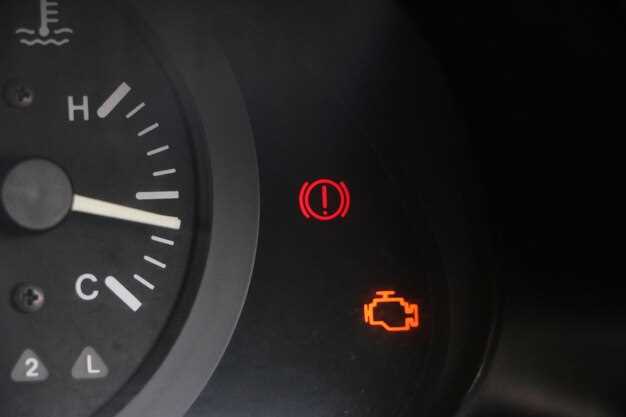What to Do When the Fiat Check Engine Light Appears

Experiencing the check engine light illuminated on your Fiat’s dashboard can be both alarming and confusing. This warning indicates that your vehicle’s onboard diagnostic system has detected an issue that requires attention. Understanding the code behind this light is the first step toward diagnosing and resolving the problem.
To begin with, it’s essential to retrieve the reading from your car’s onboard computer. This can be done using an OBD-II scanner, which will provide you with a fault code that helps pinpoint the root of the issue. Once you have the code, you can analyze its meaning and determine the necessary actions to take.
Ignoring the check engine light could lead to more significant problems down the road. Therefore, knowing how to interpret the codes and what steps to follow is crucial for maintaining your Fiat’s performance and reliability. Whether you choose to troubleshoot the issue yourself or consult a professional mechanic, being informed will help you make the best decision for your vehicle.
Understanding the Check Engine Light Messages

The check engine light serves as a vital warning system in your vehicle, alerting you to potential issues that require attention. When this light activates, it is crucial to decode what it is trying to communicate. The messages associated with the check engine light can range from minor inconveniences to significant mechanical problems.
To understand the specific issue, a diagnostic code reading is necessary. Modern vehicles, including Fiats, are equipped with an On-Board Diagnostics (OBD) system that generates trouble codes when it detects a malfunction. These codes, typically in a format such as P0123, can be accessed using an OBD-II scanner. By retrieving the code, you can identify the underlying problem more accurately.
Each code corresponds to a specific issue, such as engine misfires, oxygen sensor failures, or emission control problems. Understanding these codes helps prioritize repairs based on severity and urgency. Additionally, some issues may trigger the check engine light without causing immediate performance problems, making it essential to investigate promptly to prevent further damage.
In summary, the check engine light is an important indicator of your vehicle’s health. Performing a code reading is the first step in diagnosing the problem, allowing you to make informed decisions about the necessary repairs and how to best address the situation.
How to Read Diagnostic Codes with an OBD-II Scanner
When your Fiat’s check engine light illuminates, it indicates that the engine’s performance or emissions system is not functioning properly. To determine the specific problem, you can use an OBD-II scanner, a tool that interfaces with the onboard diagnostics system of your vehicle.
First, locate the OBD-II port in your Fiat, which is usually found under the dashboard near the driver’s seat. Once you find the port, plug in the OBD-II scanner. Most scanners will power on automatically, but some may require you to turn the ignition key to the “on” position without starting the engine.
After connecting the scanner, follow the tool’s instructions to initiate a diagnostic scan. This process will typically take a few moments as the scanner communicates with the engine’s computer to retrieve stored codes. These codes are alphanumeric and correspond to specific issues within the engine or its systems.
Once the scanning process is complete, the OBD-II scanner will display diagnostic trouble codes (DTCs). Each code relates to a particular malfunction. For example, a code that begins with “P” generally signifies a powertrain issue, which encompasses the engine and transmission. Writing down these codes is crucial for further research or discussion with a mechanic.
To interpret the codes, refer to the scanner’s manual or an online database. Codes often come with detailed descriptions of the fault along with potential causes. Understanding these codes can help you make informed decisions about the next steps, whether it be simple troubleshooting at home or seeking professional assistance.
Finally, after addressing the issues indicated by the codes, you may need to clear the codes from the engine control module (ECM) using the scanner. This step ensures that the check engine light is reset and will not automatically reactivate unless the underlying issue persists.
Common Issues Indicated by the Check Engine Light in Fiats

The check engine light in your Fiat serves as an alert for various underlying issues that can affect the engine’s performance and overall vehicle health. Identifying the exact code associated with the warning light can significantly aid in diagnosing the problem.
One common issue signaled by the check engine light is a faulty oxygen sensor. This sensor measures the amount of unburned oxygen in the exhaust and helps regulate the air-fuel mixture. A malfunctioning sensor can lead to decreased fuel efficiency and increased emissions.
An additional issue could be a loose or damaged gas cap. This often leads to fuel vapors escaping, resulting in the check engine light being triggered. Ensuring that the gas cap is securely tightened can sometimes resolve the warning without further action needed.
Another frequent cause is problems with the mass airflow sensor (MAF). This component measures the amount of air entering the engine, which is critical for optimal fuel injection. If the MAF sensor fails, it may cause poor acceleration and rough idling.
Finally, engine misfires, often due to faulty spark plugs or ignition coils, can also be indicated by the check engine light. Misfires can lead to various engine problems if not addressed promptly, including reduced power and higher fuel consumption.
In all these cases, using an OBD-II scanner to read the engine codes can provide specific insights into the issue, allowing for a more effective repair process.



